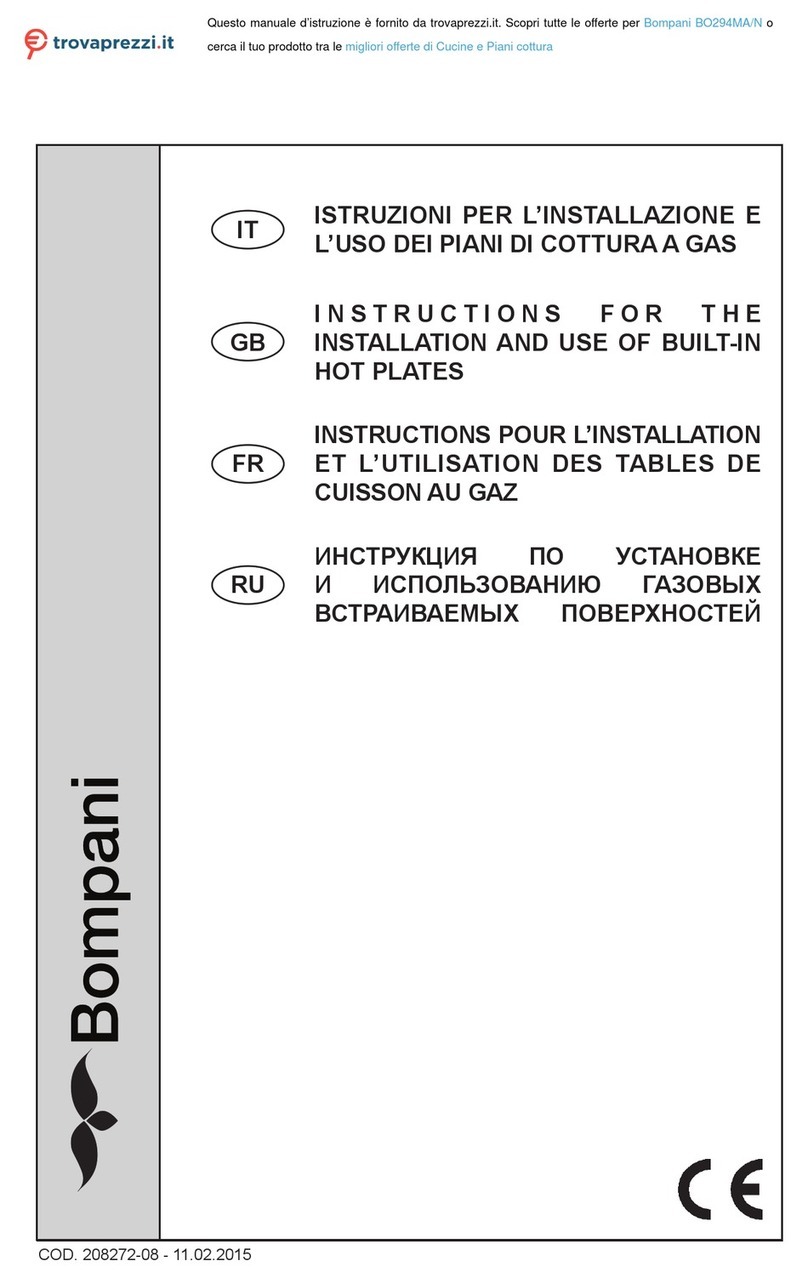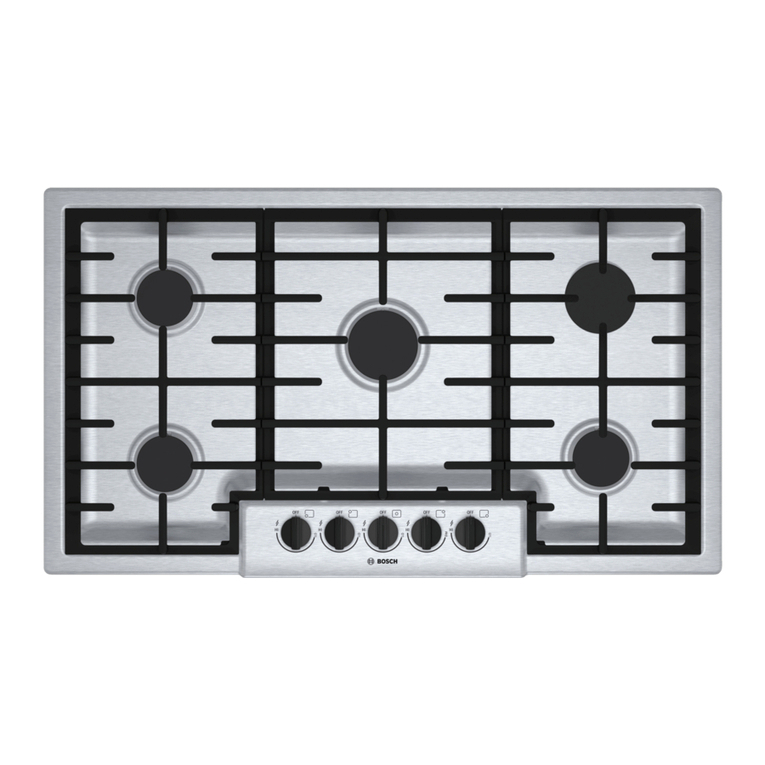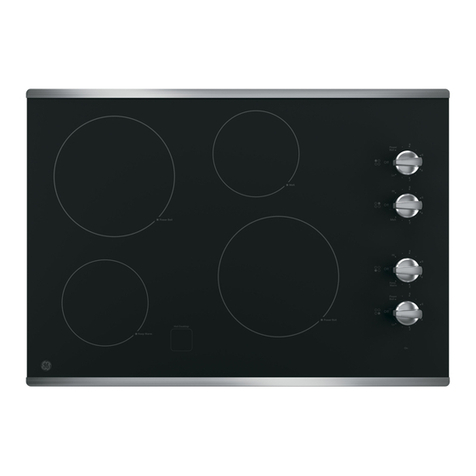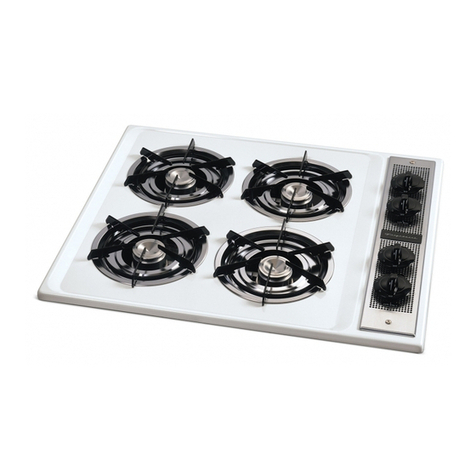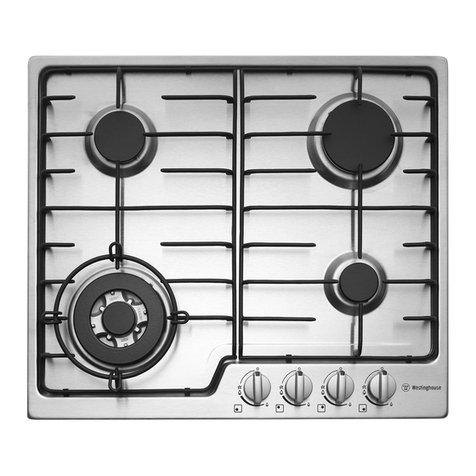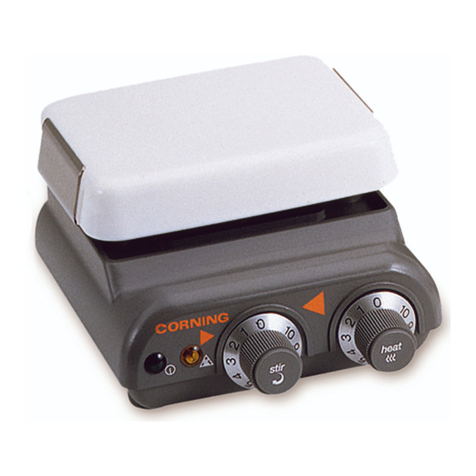Vulcan-Hart VI2 User manual

- NOTICE -
This Manual is prepared for the use of trained Vulcan Service
Technicians and should not be used by those not properly
qualified. If you have attended a Vulcan Service School for this
product, you may be qualified to perform all the procedures
described in this manual.
This manual is not intended to be all encompassing. If you have
not attended aVulcan ServiceSchool forthisproduct, you should
read, in its entirety, the repair procedure you wish to perform to
determine if you have the necessary tools, instruments and skills
required to perform the procedure. Procedures for which you do
not have the necessary tools, instruments and skills should be
performed by a trained Vulcan Service Technician.
Reproduction or other use of this Manual, without the express
written consent of Vulcan, is prohibited.
SERVICE MANUAL
INDUCTION
COOKERS
MODEL ML
VI2 114713
VI3 114714
VI22 114715
VI33 114716
VI23 114717
Model VI22 shown
A product of VULCAN-HART LOUISVILLE, KY 40201-0696
Form 24591 (Rev. A, 12-98) Supercedes (5-97)

2
TABLE OF CONTENTS
GENERAL............................................................................. 3
Introduction ........................................................................ 3
How to Distinguish a Usable Pan .................................................... 3
UsablePansWhichHaveSlowerRatesofHeatTransfer.................................. 3
Recommended Pans ............................................................. 4
UnusablePans.................................................................. 5
Tools ............................................................................. 5
Location........................................................................... 5
Controls........................................................................... 5
Specifications ...................................................................... 6
Cleaning .......................................................................... 6
REMOVALANDREPLACEMENTOFPARTS ................................................. 7
TopCover ......................................................................... 7
InverterAssembly ................................................................... 7
FanMotors ........................................................................ 8
Controller Board, Led and Potentiometer .................................................. 9
Knob Gasket ....................................................................... 9
InverterCoil........................................................................ 9
High Voltage Board ................................................................. 10
Low Voltage Board .................................................................. 10
EMIBoard ........................................................................ 11
FuseonEMIBoard ................................................................. 11
Thermistor, Tension Spring and Support ................................................. 11
SERVICEPROCEDURESANDADJUSTMENTS .............................................. 12
ThermistorTest .................................................................... 12
ControllerBoardPotentiometerTest .................................................... 12
High Voltage Board Test ............................................................. 12
InverterCoilTest................................................................... 13
PowerOutputAdjustment ............................................................ 13
AccessHoleModification............................................................. 16
TransformerTest................................................................... 18
ELECTRICALOPERATION .............................................................. 18
Component Function ................................................................ 18
Component Location ................................................................ 19
Sequence of Operation .............................................................. 20
PlugLayout ....................................................................... 21
WiringDiagram .................................................................... 22
TROUBLESHOOTING .................................................................. 24
© VULCAN 1997, 1998

INDUCTION COOKERS - GENERAL
3
GENERAL
INTRODUCTION
Model VI2 is a single 2.2KW cooker.
Model VI3 is a single 3KW cooker.
Model VI22 is a double 2.2KW cooker.
Model VI33 is a double 3KW cooker.
Model VI23 is a double cooker with one 2.2KW cooker and one 3KW cooker.
The induction cooktop will not heat the way a resistance heater conducts to the pan. A magnetic induction coil is
beneath the ceramic top. This coil creates a magnetic field that requires a steel or iron pan to complete the
magnetic loop. If the pan is not present, the cooktop stays in a “cool” ready state without using much current. It is
necessary to use iron or steel pans, or special pans designed for induction use. Ceramic, glass, pottery and some
special stainless steel pans will not complete the magnetic loop and, therefore, will not heat properly, and should
not be used.
How to Distinguish a Usable Pan
Put the pan filled with water on the center of the cooktop and turn the control knob to the desired cooking level.
The indicator light will light continuously for a usable pan and will blink for an unusable pan.
Usable Pans Which Have Slower Rates of Heat Transfer
Pans with smaller bottom diameter or partially contacting bottom may be usable but will have reduced heat
transfer rates. These may be acceptable for warming but not for frying.

INDUCTION COOKERS - GENERAL
4
Recommended Pans
Pans made of cast iron, enameled iron, or stainless steel with an iron inner layer are recommended. Stainless
steel pans with 18-0, 18-8, 18-10, and 18-Cr material are acceptable if a magnet will attach itself to the pan and if
the shape of the pan is acceptable. Pans with a flat bottom 5" to 10½" in diameter are recommended. Thin pans
may deform during heating; a thicker wall and bottom are recommended. Pans made of 18-8 stainless steel and
pans with a smaller diameter bottom may have slower rates of heat transfer.

INDUCTION COOKERS - GENERAL
5
Unusable Pans
Pans made of porcelain, earthenware, heat-resistant glass, copper, or aluminum are not recommended because
they do not transfer heat from the magnetic induction field.
TOOLS
•Standard set of hand tools
•VOM with AC current tester (Any VOM with a
sensitivity of at least 20,000 ohms per volt can
be used.)
•Thermal compound Part # 819643
•Demeyere sauce pan with 26cm top opening
and 24cm bottom PMI Part # 424971-1
&
Fiberglass screwdriver Part # 424998-1
&
Field Service Grounding Kit Part #TL-84919
LOCATION
Position the cooktop on a suitable level countertop
surface. Do not locate the cooktop near fryers, a hot
stove, or over an oven. The electrical controls inside
the cooktop will shut down if they overheat (above
110°F). Refer to the Installation and Operation
Manual for complete installation instructions.
CONTROLS
Control Knob Turn counterclockwise to OFF; clockwise to desired cooking level.
Indicator Light:
On Indicates that power is ON and at what cooking level.
Blinking If the indicator light blinks continuously, it indicates the cooktop is in stand-by mode. This
means no pan is detected and heat is OFF. Cooktop will shut off in 3 minutes.
If cooktop is in stand-by and has shut off after 3 minutes, it must be reset. Reset cooktop by
turning control knob to OFF, then ON to desired cooking level.
If the indicator light blinks intermittently for 2 or 3 seconds and then stops, it indicates an
elevated cooking temperature of 380
(
F or higher. This is normal. The cooktop is ensuring
that maximum internal temperatures are not exceeded.
DOUBLE COOKER CONTROLS SHOWN

INDUCTION COOKERS - GENERAL
6
SPECIFICATIONS
MODEL VOLTAGE PLUG
TYPE MAX.
AMPS BREAKER
SIZE
VI2 208/60/1
220/240/60/1 6-20P 10.6
9.1/9.1 15
15
VI3 208/60/1
220/240/60/1 6-20P 14.6
12.3/12.5 15
15
VI22 208/60/1
220/240/60/1 6-30P 21.2
18.2/18.2 30
30
VI23 208/60/1
220/240/60/1 6-30P 25.2
21.4/21.6 30
30
VI33 208/60/1
220/240/60/1 6-30P 29.2
24.6/25.0 30
30
CLEANING
WARNING: DISCONNECT ELECTRICAL POWER
BEFORE CLEANING.
Clean the ceramic cooktop surface by using a cloth
moistened in warm water, or a solution of detergent
and warm water. For stubborn stains, ScotchBrite or
a soft paste of cleanser may be used; do not use
abrasive materials or harsh scouring action because
this could damage the surface.
Snap out air filters located on the bottom of the
cooktop and wash them in a sink. Dry filters before
reinstalling.
NOTE: Do not operate without filters in place. Filters
must be kept clean to prevent unit from overheating.
Keep area around unit clear to insure proper air
circulation.

INDUCTION COOKERS - REMOVAL AND REPLACEMENT OF PARTS
7
REMOVAL AND REPLACEMENT OF PARTS
TOP COVER
WARNING: UNPLUG UNIT BEFORE SERVICING.
1. Remove the screws securing the top cover to
the back of the unit.
2. Turn the unit on its side to access and remove
the screws securing the cover to the bottom.
3. Put the unit upright and pull the top cover
straight off so not to smear the thermal
compound.
4. Disconnect the lead wires at the controller
board if necessary.
5. Reverse procedure to install.
NOTE: There must be sufficient thermal compound
applied to center of inverter coil to contact top cover
when it is installed.
INVERTER ASSEMBLY
WARNING: UNPLUG UNIT BEFORE SERVICING.
1. Remove the top cover as outlined under “TOP
COVER”.
2. Identify and disconnect the fan plugs.
3. Remove any cable ties securing fan wires to
inverter frame.
4. Disconnect power leads from terminal block
and remove screws securing terminal block to
base.
5. Remove cable clamp securing ferrite filter on
ground wire.
6. Remove controller board and potentiometer as
outlined in “CONTROLLER BOARD, LED AND
POTENTIOMETER”.
7. Remove six screws securing inverter assembly
to the base.
8. Reverse procedure to install.
9. Apply a liberal amount of thermal compound to
thermistor in center of inverter coil to contact
top cover as noted in “TOP COVER”.
10. Adjust power output as outlined under
“POWER OUTPUT ADJUSTMENT”.

INDUCTION COOKERS - REMOVAL AND REPLACEMENT OF PARTS
8
FAN MOTORS
WARNING: UNPLUG UNIT BEFORE SERVICING.
1. Remove the top cover as outlined under “TOP
COVER”.
2. Disconnect the lead wire plug for the fan motor
being removed.
Units Built Before 11/14/97
1. Intake fan only:
A. Snap off filters located underneath unit.
B. Remove screws securing fan housing to
base.
C. Remove fan housing.
D. Remove fan from fan housing.
2. Discharge fan:
A. Remove fan.
Current Production Units
1. Intake fan only:
A. Snap off filters located underneath unit.
B. Remove screws securing fan air deflector
to base.
C. Remove fan air deflector.
D. Remove remaining screws securing fan to
be removed.
2. Reverse procedure to install.
NOTE: Fans have arrows indicating direction of air
flow and rotation. Air flow is entering unit through
base and exiting out rear of unit.

INDUCTION COOKERS - REMOVAL AND REPLACEMENT OF PARTS
9
CONTROLLER BOARD, LED
AND POTENTIOMETER
WARNING: UNPLUG UNIT BEFORE SERVICING.
CAUTION: Certain components in this system
are subject to damage due to electro-static
discharge during field repairs. A Field Service
Kit is available to prevent this damage. This
Field Service Kit must be used anytime a
component or circuit board is handled. Specific
instructions are included with the kit.
1. Remove the top cover as outlined under “TOP
COVER”.
2. Remove the knob by pulling off from the
controller board on the front of the unit.
3. Unplug cable from controller board.
4. Remove the plastic nuts that secure the
controller board to the top cover.
5. Remove potentiometer mounting nut if pot is
being replaced.
6. Unplug LED from board if LED is being
replaced.
7. Reverse procedure to install.
KNOB GASKET
WARNING: UNPLUG UNIT BEFORE SERVICING.
1. Remove the controller board as outlined under
“CONTROLLER BOARD, LED AND
POTENTIOMETER”.
2. Pry out gasket from inside top cover.
3. Reverse procedure to install.
INVERTER COIL
WARNING: UNPLUG UNIT BEFORE SERVICING.
CAUTION: Certain components in this system
are subject to damage due to electro-static
discharge during field repairs. A Field Service
Kit is available to prevent this damage. This
Field Service Kit must be used anytime a
component or circuit board is handled. Specific
instructions are included with the kit.
1. Remove the top cover as outlined under “TOP
COVER”.
2. Remove screws holding the inverter coil to the
inverter assembly frame.
NOTE: Watch for spacing washers under inverter
coil between coil and frame on 208 volt units. These
spacers must be installed to insure proper operation.

INDUCTION COOKERS - REMOVAL AND REPLACEMENT OF PARTS
10
3. Position the inverter coil on its side to access
the lead wires.
4. Disconnect the lead wires from the high voltage
board.
NOTE: The lead from the inner portion of the
inverter coil connects to the “L”terminal and the
lead from the outer portion connects to the “M”
terminal. These leads must also be twisted and then
connected properly.
5. Remove thermistor, tension spring and support
as outlined in “THERMISTOR, TENSION
SPRING AND SUPPORT”
6. Reverse procedure to install.
7. Adjust power output as outlined under
“POWER OUTPUT ADJUSTMENT”.
HIGH VOLTAGE BOARD
WARNING: UNPLUG UNIT BEFORE SERVICING.
CAUTION: Certain components in this system
are subject to damage due to electro-static
discharge during field repairs. A Field Service
Kit is available to prevent this damage. This
Field Service Kit must be used anytime a
component or circuit board is handled. Specific
instructions are included with the kit.
1. Remove the top cover as outlined under “TOP
COVER”.
2. Remove the inverter coil as outlined under
“INVERTER COIL”.
3. Disconnect the lead wires for the high voltage
board.
4. Remove the screws that secure the high
voltage board mounting plate to the inverter
assembly frame.
5. Reverse the procedure to install.
6. Adjust power output as outlined under
“POWER OUTPUT ADJUSTMENT”.
LOW VOLTAGE BOARD
WARNING: UNPLUG UNIT BEFORE SERVICING.
CAUTION: Certain components in this system
are subject to damage due to electro-static
discharge during field repairs. A Field Service
Kit is available to prevent this damage. This
Field Service Kit must be used anytime a
component or circuit board is handled. Specific
instructions are included with the kit.
1. Remove the high voltage board as outlined
under “HIGH VOLTAGE BOARD”.
2. Disconnect the lead wires to the low voltage
board.
3. Push in the tabs of the pins that secure the low
voltage board and remove the board from the
mounting plate.
4. Reverse the procedure to install.
5. Adjust power output as outlined under
“POWER OUTPUT ADJUSTMENT”.

INDUCTION COOKERS - REMOVAL AND REPLACEMENT OF PARTS
11
EMI BOARD
WARNING: UNPLUG UNIT BEFORE SERVICING.
CAUTION: Certain components in this system
are subject to damage due to electro-static
discharge during field repairs. A Field Service
Kit is available to prevent this damage. This
Field Service Kit must be used anytime a
component or circuit board is handled. Specific
instructions are included with the kit.
1. Remove the high voltage board as outlined
under “HIGH VOLTAGE BOARD”.
2. Disconnect the lead wires to the EMI board.
3. Push in the tabs of the pins that secure the EMI
board and remove the board from the mounting
plate.
4. Reverse the procedure to install.
5. Adjust power output as outlined under
“POWER OUTPUT ADJUSTMENT”.
FUSE ON EMI BOARD
WARNING: UNPLUG UNIT BEFORE SERVICING.
1. Remove fuse using needle nose pliers or small
screwdriver.
THERMISTOR, TENSION
SPRING AND SUPPORT
WARNING: UNPLUG UNIT BEFORE SERVICING.
1. Remove the top cover as outlined under “TOP
COVER”.
2. Unplug thermistor from the high voltage board.
3. Depress thermistor support assembly and
rotate 90°.
4. Withdraw thermistor support assembly from
inverter coil.
5. Reverse the procedure to install.
NOTE: Apply generous amount of thermal
compound to top of thermistor support assembly.

INDUCTION COOKERS - SERVICE PROCEDURES AND ADJUSTMENTS
12
SERVICE PROCEDURES AND ADJUSTMENTS
WARNING: CERTAIN PROCEDURES IN THIS SECTION REQUIRE ELECTRICAL TEST OR
MEASUREMENTS WHILE THE POWER IS APPLIED TO THE MACHINE. EXERCISE EXTREME CAUTION AT
ALL TIMES. IF TEST POINTS ARE NOT EASILY ACCESSIBLE, DISCONNECT POWER, ATTACH TEST
EQUIPMENT AND REAPPLY POWER TO TEST.
NOTE: Make sure all plugs are properly connected before applying power. Circuit boards have a special coating
on them so handle carefully.
THERMISTOR TEST
WARNING: UNPLUG UNIT BEFORE SERVICING.
At room temperature resistance should be
approximately 120,000 ohms. As temperature
increases, resistance decreases.
CONTROLLER BOARD
POTENTIOMETER TEST
WARNING: UNPLUG UNIT BEFORE SERVICING.
1. Remove the controller board as outlined under
“CONTROLLER BOARD, LED and
POTENTIOMETER”.
2. Unplug both potentiometer leads.
A. Check ON/OFF switch portion operation of
potentiometer with ohm meter.
B. Check potentiometer according to
diagram.
3. Replace potentiometer if either test fails.
Potentiometer is secured with a nut.
4. Reverse the procedure to install.
HIGH VOLTAGE BOARD
TEST
WARNING: UNPLUG UNIT BEFORE SERVICING.
1. Unplug all connectors on high voltage board.
2. Check R102-1 and R102-2. Each should be
approximately 130,000 ohms.
3. Check R103-1 and R103-2. Each should be
approximately 68,000 ohms.
4. If either test fails, replace the high voltage
board.
5. To check components C112-1, C112-2, TR1,
TR2 and DD1, disconnect the inverter coil from
the high voltage board.
A. Unplug WF5.
B. Set VOM for 20M scale.
C. Connect VOM negative lead to pin 4 of
WF5 on the board.
NOTE: Pin 1 is nearest the heatsink.
D. Connect VOM positive lead to the
heatsink.

INDUCTION COOKERS - SERVICE PROCEDURES AND ADJUSTMENTS
13
E. A reading greater than 2 meg ohms should
be observed. It may take 10 to 15 seconds
to reach this value.
F. To check collector/base of TR1 and TR2,
keep VOM positive lead on the heatsink
and connect the VOM negative lead to pin
6 of WF5 on the board.
G. A reading of more than 0 meg ohms
should be observed.
6. If either test in step 4 fails, replace the high
voltage board and perform “POWER OUTPUT
ADJUSTMENT”.
NOTE: Not all components on the board have been
checked in above tests. A failure could still exist that
would require board replacement.
INVERTER COIL TEST
WARNING: UNPLUG UNIT BEFORE SERVICING.
1. Disconnect one coil lead from high voltage
board.
2. Test continuity of coil with ohm meter.
A. If your meter can be adjusted for zero
ohms, do so.
B. Test continuity of coil. Reading should be
zero ohms.
C. If meter cannot be adjusted, test continuity
of coil. Reading will be about .2 ohms or
the resistance of the meter leads you are
using.
3. If coil reads open, replace inductor coil.
POWER OUTPUT
ADJUSTMENT
NOTE: On units built prior to 11/14/97, check for
potentiometer adjustment access hole in base. If no
hole is found, refer to “ACCESS HOLE
MODIFICATION”.
NOTE: Test and adjust coils independently.
1. Use Demeyere Apollo Series sauce pan PMI
Part #424971-1 when performing this
adjustment.
A. Partially fill pan with water, place on
center of cooking zone of cooker being
tested and set power control to maximum.
2. Measure and record line voltage under load.
3. Unplug power cord.
4. Remove the top cover as outlined under “TOP
COVER”.
5. Loosen the power cord strain relief connector
and withdraw the power cord enough to attach
an amp meter outside the case.
6. Install the top cover and the screws securing it
to the center of the base to prevent the base
from flexing downward.
7. Connect the power.
8. Place pan with water on center of cooking zone
of cooker being tested and set power control to
maximum.
9. Read the amp meter and compare reading to
the following charts.

INDUCTION COOKERS - SERVICE PROCEDURES AND ADJUSTMENTS
14
AMPERE DRAW AT SPECIFIC VOLTAGES FOR 208/60/1 UNITS @ #9 SETTING.
NOTE: Chart is for single coil.
UNITS WITH 208V/60HZ DATA PLATES
SUPPLY VOLTAGE 220 216 208 198 188
KW RATING OF COOKTOP
ZONE 32.232.232.232.232.2
DEMEYERE APOLLO SERIES
FRYING PAN 26CM TOP X 24CM
BOTTOM. AMPS @ #9 SETTING.
14.7 10.7 14.8 10.6 14.6 10.6 14.4 10.4 12.7 10
NOTE: 208V units must have a nominal line voltage of 208V.

INDUCTION COOKERS - SERVICE PROCEDURES AND ADJUSTMENTS
15
AMPERE DRAW AT SPECIFIC VOLTAGES FOR 220/240/60/1 UNITS AT @9 SETTING.
NOTE: Chart is for single coil.
UNITS WITH 220/240/60HZ DATA PLATES
SUPPLY VOLTAGE 264 240 230 220 208
KW RATING OF COOKTOP
ZONE 32.232.232.232.232.2
DEMEYERE APOLLO SERIES
FRYING PAN 26CM TOP X
24CM BOTTOM. AMPS @ #9
SETTING.
12.8 9.3 12.5 9.1 12.4 9.2 12.3 9.1 12 9
NOTE: 220/240V units must have a nominal line voltage of 220/240V.

INDUCTION COOKERS - SERVICE PROCEDURES AND ADJUSTMENTS
16
10. Turn the potentiometer on the low voltage
board to obtain the correct current for the
applied voltage measured in Step 2.
NOTE: Do not exceed current for applied voltage
for specific test pan. Damage to unit will result.
A. To adjust if unit has potentiometer access
hole in base:
1) Remove pan from cooker.
2) Remove plug from adjustment hole.
CAUTION: Use only a fiberglass (or insulated
shaft) screwdriver to avoid shock and damage
to unit.
3) Securely elevate and level unit as
necessary to access hole with
fiberglass (or insulated shaft)
screwdriver.
4) Place pan with water on center of
cooking zone of cooker being tested.
5) Use the fiberglass (or insulated shaft)
screwdriver and pass it through the
hole in the base to the potentiometer
on the low voltage board. Turn
potentiometer counterclockwise to
increase power output or clockwise to
decrease power output.
6) Repeat step 5) until reading is
correct.
7) Install plug in access hole in base.
B. If unit does not have an access hole in
base:
1) Unplug power cord.
2) Drill a hole as outlined under
“ACCESS HOLE MODIFICATION”.
3) Perform step A .
ACCESS HOLE
MODIFICATION
NOTE: For units made prior to 11/14/97.
WARNING: UNPLUG UNIT BEFORE SERVICING.
1. Remove top cover.
2. Protect inverter assembly from metal chips by
sliding a paper towel or similar object under
inverter in the area of the potentiometer on the
low voltage board.
3. Temporarily install top cover.
4. Turn unit onto its top, being careful not to
damage top.
5. Use the following charts and drill hole(s) as
required by your unit.
6. To aid in preventing drill bits from going in too
far to damage circuit board, put tape around
drill bit
F
" from tip. Use a small bit as a pilot
bit and finish with a
G
" drill bit.
NOTE: Be careful not to catch paper towel when
drill bit breaks through base.
7. Install plug (plugs on double cooker) Part #
424881-1 into hole(s).

INDUCTION COOKERS - SERVICE PROCEDURES AND ADJUSTMENTS
17

INDUCTION COOKERS - SERVICE PROCEDURES AND ADJUSTMENTS
18
TRANSFORMER TEST
WARNING: UNPLUG UNIT BEFORE SERVICING.
1. Remove inverter coil as outlined in “INVERTER
COIL”.
2. Remove high voltage board as outlined in
“HIGH VOLTAGE BOARD”.
3. Unplug transformer secondary from plug WF1
on the low voltage board.
4. Remove leads connected to AC terminals
which are next to transformer primary plug
CN101 on the EMI board.
WARNING: THE FOLLOWING STEPS REQUIRE
POWER TO BE APPLIED TO THE UNIT DURING
TEST. USE EXTREME CAUTION AT ALL TIMES.
5. Apply power to unit and check voltage at
transformer secondary plug as shown in
diagram.
6. If test is not correct, replace the transformer.
7. Assemble in reverse order.
ELECTRICAL OPERATION
COMPONENT FUNCTION
Controller Board ......... Inputs to the low voltage board to turn unit on or off and select cooking level.
Led .................... Installedoncontrollerboard and displays cooking level.
Inverter Assembly ........ Receivessignal from controller board to produce energy for cooking.
EMI Board .............. Supplies voltage to the high voltage board.
Low Voltage Board ....... Controlshighvoltage board based on input from controller board.
High Voltage Board ....... Supplies power to the inverter coil for cooking. Supplies power to the cooling
fans.
Fans ................... Circulateairtocoolinteriorcomponents.
Thermistor .............. Measurescooktoptemperature.
Transformer ............. Supplies power to the memory board.
Fuse ................... ProtectscircuitryonEMIboard.

INDUCTION COOKERS - ELECTRICAL OPERATION
19
COMPONENT LOCATION
Units built before 11/14/97 have fans mounted inside the fan housing as illustrated below. Current production
units have fans mounted directly to the base and a fan air deflector which directs air flow across the inverter
assembly as shown in pictures.

INDUCTION COOKERS - ELECTRICAL OPERATION
20
SEQUENCE OF OPERATION
1.
Cooktop has power applied.
A. Circuit boards have power applied to them
all the time the unit is plugged in and the
receptacle is live.
B. Low voltage board is monitoring input from
controller board.
2. Turn control knob clockwise to desired cooking
level.
A. Cooling fans turn on.
B. If indicator light blinks, it indicates no pan
is detected and cooktop will shut off after 3
minutes.
1) Cooktop is in stand-by mode and
must be reset to continue operating.
2) Cooling fans turn off.
3) Reset cooktop by turning control knob
to OFF, then back ON to desired
cooking level.
C. When pan is in place and indicator is on,
cooktop is heating.
3. When cooking is finished, turn control knob
counterclockwise to OFF.
A. Appliance fans may continue to run until
unit is cooled.
4. Cycle repeats starting at step 1.
Other manuals for VI2
1
This manual suits for next models
4
Table of contents
Other Vulcan-Hart Cooktop manuals
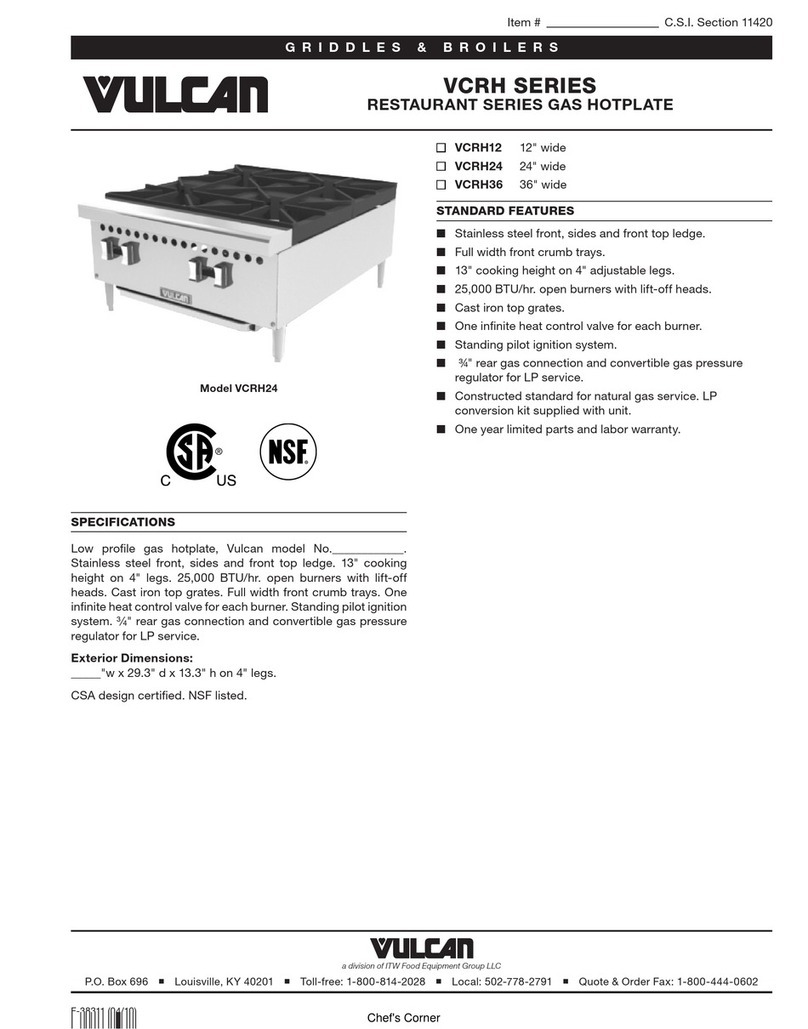
Vulcan-Hart
Vulcan-Hart VCRH12 User manual
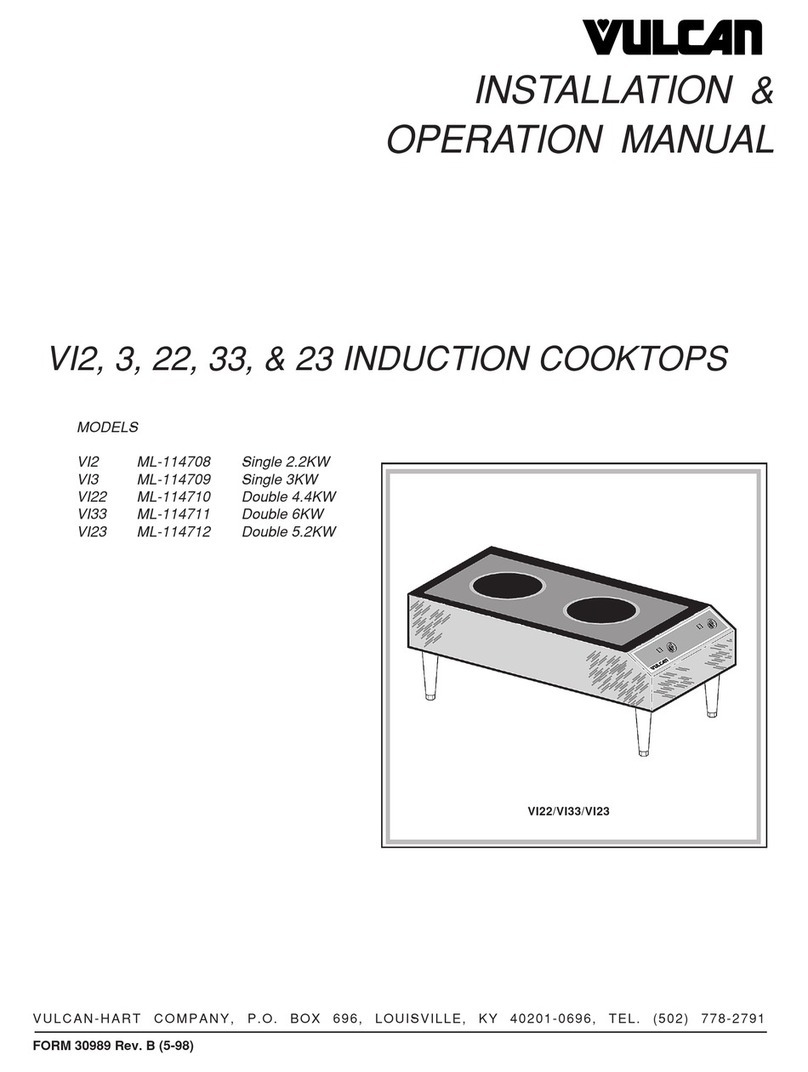
Vulcan-Hart
Vulcan-Hart VI2 User manual

Vulcan-Hart
Vulcan-Hart VCRH12 User manual
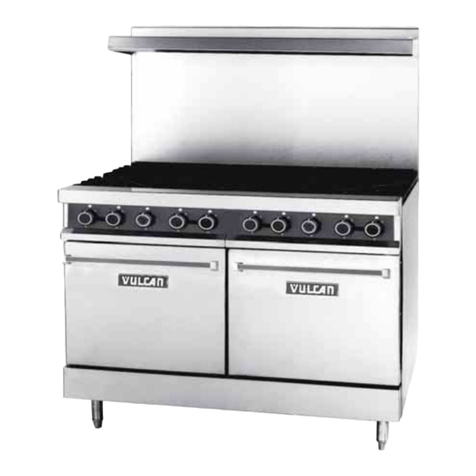
Vulcan-Hart
Vulcan-Hart 148L Manual

Vulcan-Hart
Vulcan-Hart VHP212 User manual
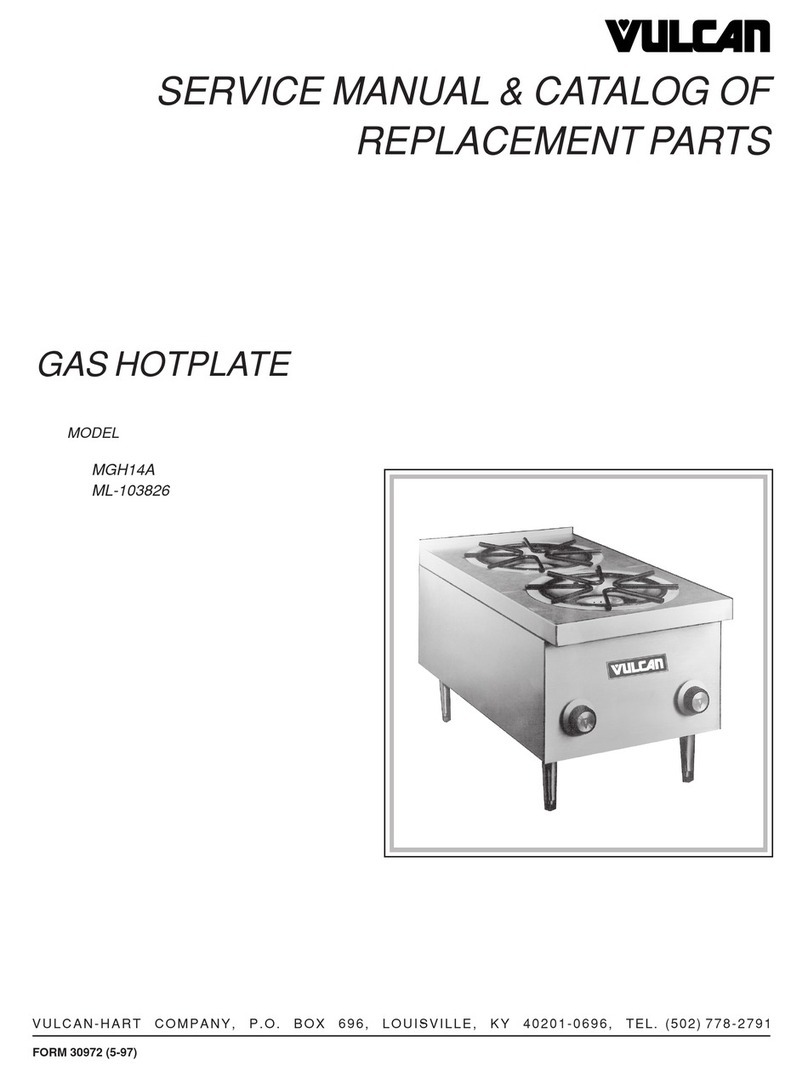
Vulcan-Hart
Vulcan-Hart MGH14A Manual

Vulcan-Hart
Vulcan-Hart VCRH24 User manual
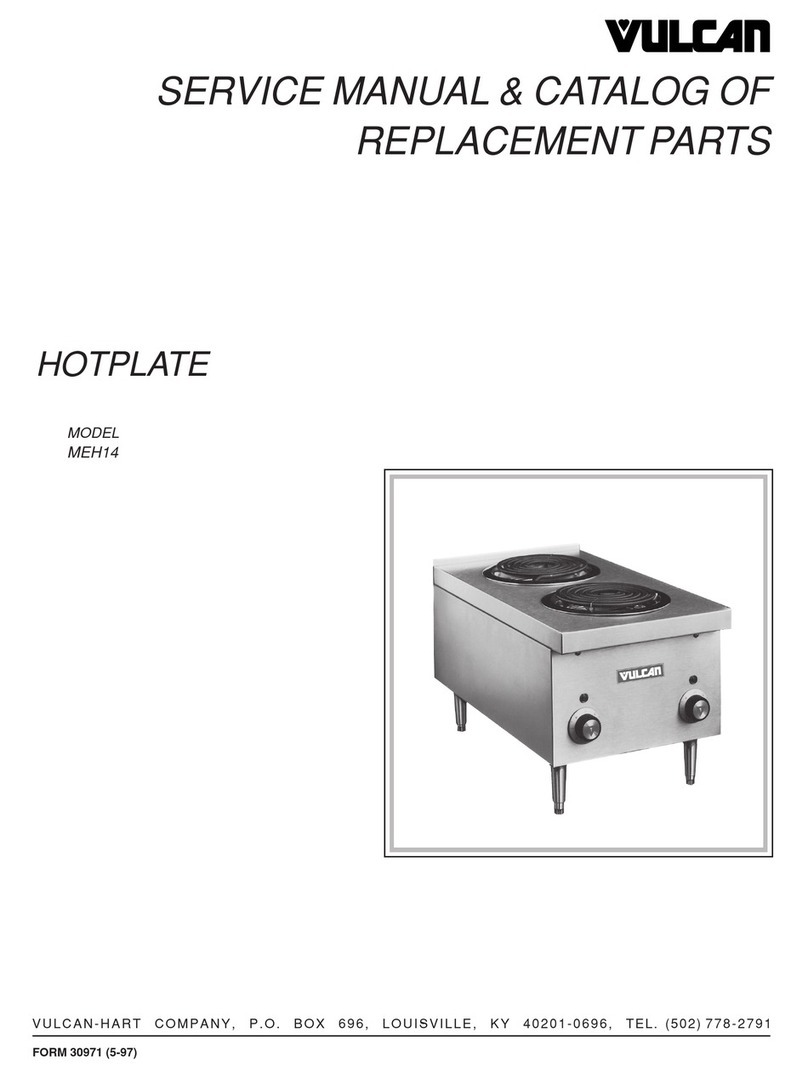
Vulcan-Hart
Vulcan-Hart MEH14 Manual
Popular Cooktop manuals by other brands
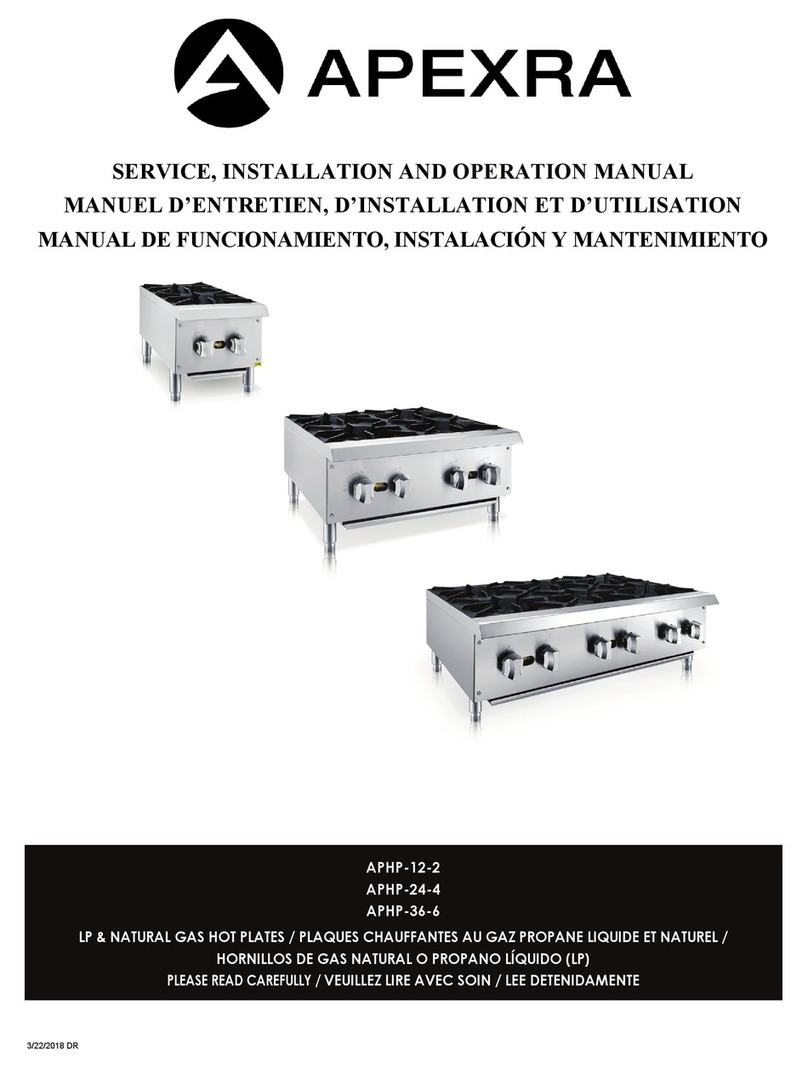
APEXRA
APEXRA APHP-12-2 SERVICE, INSTALLATION AND OPERATION MANUAL
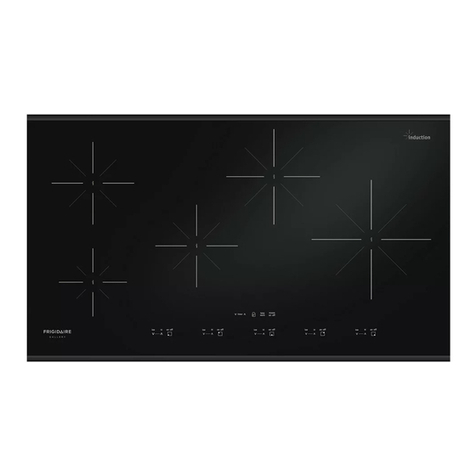
Frigidaire
Frigidaire FGIC3667MB Product specifications

NUTRICHEF
NUTRICHEF PKSTIND48EU user manual

Optimum
Optimum ST-1415 instruction manual
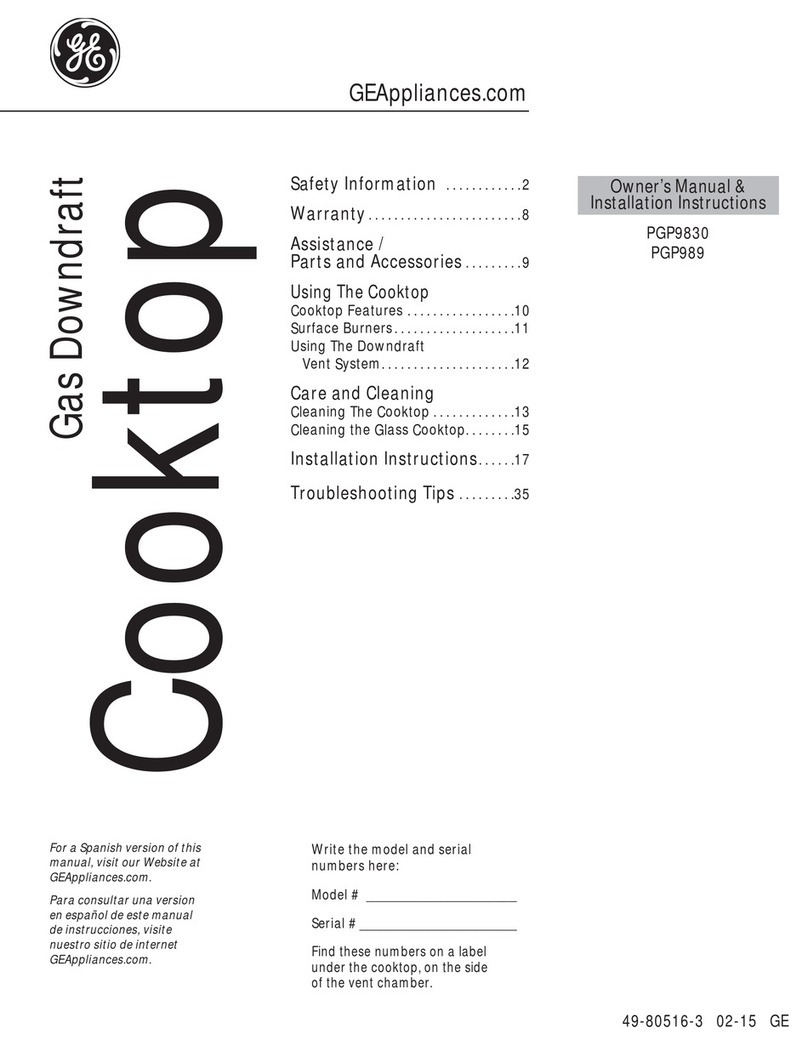
GE
GE PGP9830 Owner's Manual & Installation Instructions

Miele
Miele KM 6113 Operating and installation instructions


